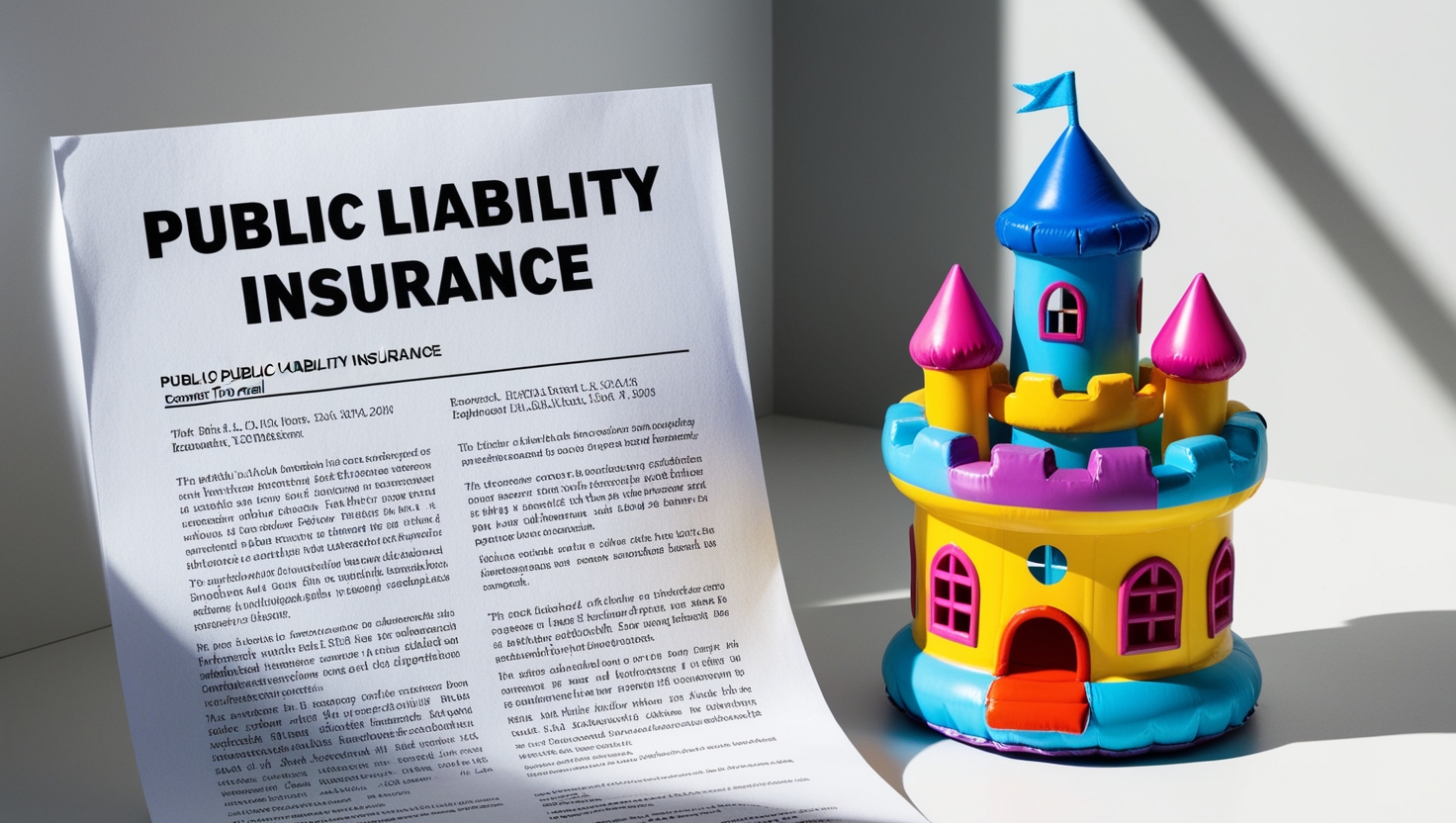
All you want to know about us
Click here to share this article

Owning a bouncy castle business can be exciting and profitable, but with fun comes the responsibility of ensuring safety for users and peace of mind for operators. One essential element for any inflatable hire business is bouncy castle insurance. Understanding the cost and the factors influencing it can help you make an informed decision. This guide delves into the details of bouncy castle insurance costs, what affects the price, and why it's a critical investment for your business.

What is Bouncy Castle Insurance?
Bouncy castle insurance is a specialized policy designed to protect businesses that hire out inflatables. It typically includes public liability insurance, equipment coverage, and, in some cases, employer’s liability insurance. This ensures that you’re financially protected in case of accidents, injuries, or damages related to your business operations.

Average Cost of Bouncy Castle Insurance
The cost of bouncy castle insurance varies depending on several factors. However, on average, businesses can expect to pay:
Public Liability Insurance: Around £100 to £500 annually, depending on coverage limits (e.g., £1 million, £5 million, or £10 million).
Equipment Insurance: Between £50 and £300 annually for protection against theft, fire, or accidental damage to your bouncy castles.
Employer’s Liability Insurance: Required by law if you have staff, costing approximately £200 to £400 annually.
Combined policies, which include public liability, equipment, and employer’s liability, typically range from £400 to £1,200 per year.

Factors Influencing Bouncy Castle Insurance Costs
1. Business Size and Scale
The number of bouncy castles you own and the frequency of their usage significantly impact insurance costs. Businesses with a larger inventory or those operating at multiple locations may face higher premiums.
2. Type of Equipment
Premiums can vary based on the size, type, and age of your inflatables. Larger or more complex units, such as obstacle courses or water inflatables, may require additional coverage, increasing costs.
3. Location of Operation
The geographic area in which you operate affects insurance costs. For example, urban areas or regions with higher claims history often result in higher premiums compared to rural areas.
4. Claims History
A clean claims history demonstrates reliability and safe operations, often leading to lower premiums. Conversely, frequent claims or a history of accidents can raise your costs.
5. Policy Limits
Choosing higher coverage limits (e.g., £10 million public liability coverage versus £5 million) ensures greater financial protection but comes at a higher premium.

Key Types of Coverage in Bouncy Castle Insurance
Public Liability Insurance
This is the most essential type of insurance for bouncy castle businesses. It covers costs related to third-party injuries or property damage resulting from your equipment. For example, if a child is injured while using your bouncy castle, public liability insurance can cover medical expenses and legal fees.
Equipment Insurance
This protects your inflatables against risks such as theft, vandalism, or accidental damage. Given the high cost of inflatables, equipment insurance is a wise addition to your policy.
Employer’s Liability Insurance
If you employ staff, whether full-time, part-time, or freelance, this insurance is legally required in the UK. It protects you against claims made by employees for work-related injuries or illnesses.
Event Insurance (Optional)
For businesses offering bouncy castles at large events or festivals, specialized event insurance may be necessary. This covers risks specific to high-footfall occasions.

Why Bouncy Castle Insurance is Essential
Operating without adequate insurance can expose your business to significant financial and legal risks. Accidents involving inflatables can lead to costly lawsuits, medical expenses, and reputational damage. Moreover, many venues and councils require proof of public liability insurance before allowing the setup of inflatables.

How to Reduce Bouncy Castle Insurance Costs
1. Maintain a Safe Operating Environment
Regularly inspect your equipment, ensure proper anchoring of inflatables, and adhere to manufacturer guidelines to minimize accidents and claims.
2. Train Staff Thoroughly
Properly trained staff can reduce operational risks. Many insurers offer discounts to businesses that invest in safety training and certification programs.
3. Invest in High-Quality Equipment
Using durable and certified inflatables reduces the likelihood of damages, potentially lowering your premiums.
4. Bundle Policies
Many insurers provide discounts when you purchase a combined policy that includes public liability, equipment, and employer’s liability insurance.

How to Choose the Right Insurance Provider
1. Compare Quotes
Shop around and obtain quotes from multiple insurers to find the best deal. Look for providers specializing in bouncy castle insurance or inflatables hire.
2. Check for Customizable Policies
Ensure that your policy covers all aspects of your operations, including optional add-ons like event insurance if needed.
3. Read Reviews and Testimonials
Select a provider with a strong reputation for customer service, claims handling, and reliability.
4. Confirm Legal Compliance
Ensure the policy complies with local regulations, including mandatory coverage like employer’s liability insurance if applicable.

Commonly Asked Questions About Bouncy Castle Insurance
Is bouncy castle insurance mandatory?
While not legally required, public liability insurance is highly recommended for anyone hiring out inflatables. Employer’s liability insurance, however, is legally required if you employ staff.
Can I get short-term bouncy castle insurance?
Yes, some insurers offer short-term policies for businesses operating seasonally or for one-off events.
Does bouncy castle insurance cover bad weather?
Most policies exclude coverage for damage caused by negligence during adverse weather conditions. Always follow safety guidelines and avoid setting up inflatables in high winds or heavy rain.

Conclusion
Bouncy castle insurance is an essential investment for businesses in the inflatable hire industry. The cost typically ranges from £100 to £1,200 annually, depending on factors such as business size, location, and coverage requirements. By maintaining safety standards, bundling policies, and selecting the right insurer, you can secure comprehensive protection at a competitive price. Ensuring that your business is adequately insured not only protects your financial interests but also builds trust with clients and partners.
undefined
undefined
undefined
undefined
undefined
undefined
undefined
undefined
undefined
undefined
By: